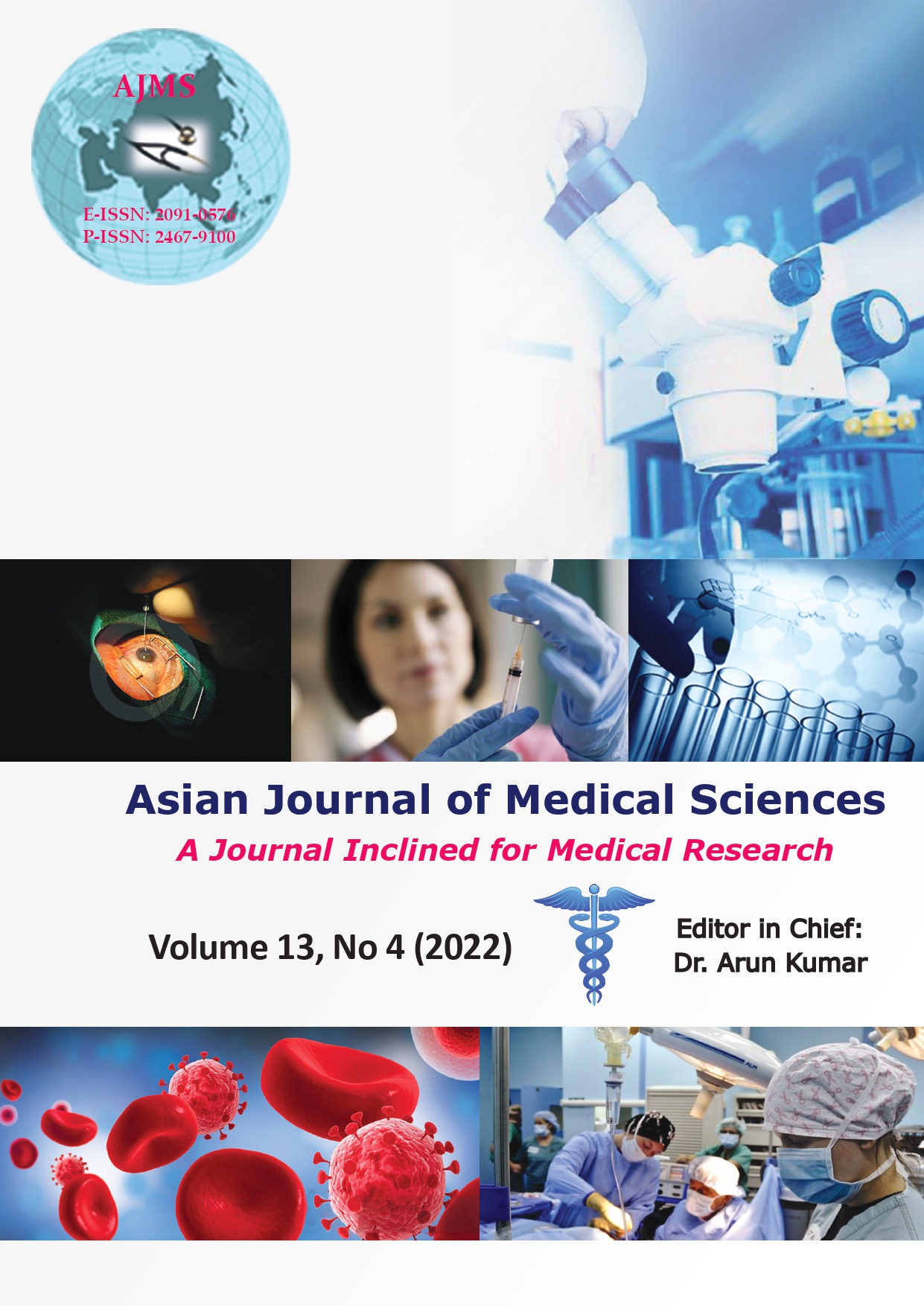An approach to axillary swellings cytomorphological (fine needle aspiration cytology) study
Keywords:
Chondroid syringoma, Ectopic breast tissue, Fine needle aspiration cytology, Lipoma, Lymphadenitis, Lymphoma, NeurofibromaAbstract
Background: The axilla, a triangular area which is located between the upper arm and thorax, contains blood vessels, nerves, lymph nodes, and fat. Axillary swellings can arise from these various mesenchymal tissues present in the axillary area. The most common palpable axillary masses are usually lymph nodes. Fine needle aspiration cytology (FNAC) is the first line investigative technique with differential diagnosis includes reactive hyperplasia, inflammatory conditions, granulomatous disorders and malignancy. FNAC is a rapid, less invasive, less traumatic, and easily accessible and a cheap diagnostic tool to differentiate the benign or the malignant nature of the swelling.
Aims and Objectives: Study is undertaken to document the spectrum of axillary lesions. Value of FNAC as a rapid diagnostic tool in diagnosing the axillary lesions.
Materials and Methods: Present study is an 18 months cross-sectional study carried out in department of pathology, tertiary care hospital. Patients demographic and clinical data were collected from request forms. Slides were reviewed and analyzed. Data were entered in microsoft excel and analyzed.
Results: Out of total 110 cases analyzed, ratio of female to male is 3.07. There were 41.8% benign and 13.6% malignant cases. 42.7% were inflammatory and 1.9% congenital lesions (ectopic breast). The most common lesions encountered are from lymph node (51.8%) (lymphadenitis-most common) followed by soft tissue tumor (Lipoma – most common). Rare lesions include nonhodgkin lymphoma, hodgkin lymphoma, neurofibroma, and chondroid syringoma.
Conclusion: FNAC is an outpatient-based accurate, rapid procedure helps in timely diagnosis of various axillary lesions including clinically and radiologically ambiguous cases. It also helps to discriminate benign and malignant lesions with less chances of false negative results.
Downloads
Downloads
Published
How to Cite
Issue
Section
License
Copyright (c) 2022 Asian Journal of Medical Sciences

This work is licensed under a Creative Commons Attribution-NonCommercial 4.0 International License.
Authors who publish with this journal agree to the following terms:
- The journal holds copyright and publishes the work under a Creative Commons CC-BY-NC license that permits use, distribution and reprduction in any medium, provided the original work is properly cited and is not used for commercial purposes. The journal should be recognised as the original publisher of this work.
- Authors are able to enter into separate, additional contractual arrangements for the non-exclusive distribution of the journal's published version of the work (e.g., post it to an institutional repository or publish it in a book), with an acknowledgement of its initial publication in this journal.
- Authors are permitted and encouraged to post their work online (e.g., in institutional repositories or on their website) prior to and during the submission process, as it can lead to productive exchanges, as well as earlier and greater citation of published work (See The Effect of Open Access).




